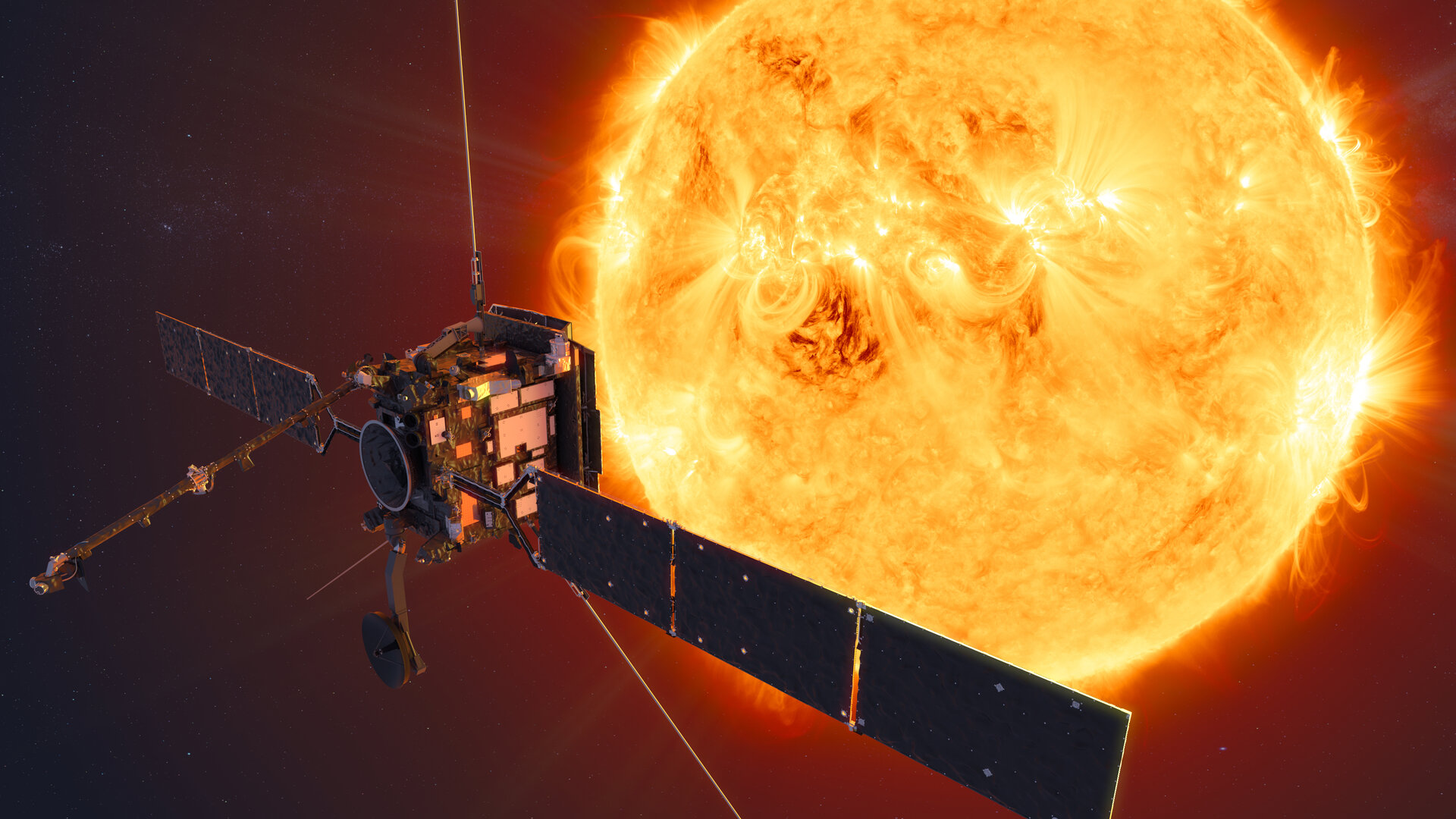Global S&T Development Trend Analysis Platform of Resources and Environment
| Watch Solar Orbiter first image release | |
| admin | |
| 2020-07-14 | |
| 发布年 | 2020 |
| 语种 | 英语 |
| 国家 | 欧洲 |
| 领域 | 地球科学 |
| 正文(英文) | Join us on Thursday 16 July for an online press briefing with Solar Orbiter mission experts, who will present the first images from ESA’s new Sun-observing spacecraft. Launched on 10 February 2020, Solar Orbiter completed its commissioning phase in mid-June and performed its first close approach to the Sun. Shortly thereafter, the European and US science teams behind the mission’s 10 instruments were able to test the entire instrument suite in concert for the first time. The first images are unique – no other images of the Sun have been taken from such a close distance – and are already exceeding the expectations of the scientists. They will be released to the public during the online press briefing starting at 14:00 CEST (13:00 BST; 08:00 EDT) on 16 July. Watch live on ESA Web TV: https://esawebtv.esa.int/ Among the speakers will be: 
The online briefing will be available for everyone to watch live. Further details and registration for media are available here. Follow the conversation on social media via the official hashtags #TheSunUpClose, #SolarOrbiter and #WeAreAllSolarOrbiters The Sun up closeDuring its first perihelion, the point in the spacecraft’s elliptical orbit closest to the Sun, Solar Orbiter got as close as 77 million kilometres from the star’s surface, about half the distance between the Sun and Earth. The spacecraft will eventually make much closer approaches to the Sun. The spacecraft is now in its cruise phase, gradually adjusting its orbit around the Sun. Once in its science phase, which will commence in late 2021, the spacecraft will get as close as 42 million kilometres from the Sun’s surface, closer than the planet Mercury. The spacecraft’s operators will gradually tilt Solar Orbiter’s orbit to enable the probe to get the first proper view of the Sun’s poles. 

Solar Orbiter's journey around the Sun
Access the video Solar Orbiter is a space mission of international collaboration between ESA and NASA. Twelve ESA Member States (Austria, Belgium, the Czech Republic, France, Germany, Italy, Norway, Poland, Spain, Sweden, Switzerland, and the United Kingdom) as well as NASA contributed to the science payload. Denmark, Finland, Greece, Ireland, Luxembourg, the Netherlands and Portugal contributed to building the spacecraft but not to the science payload. |
| URL | 查看原文 |
| 来源平台 | European Space Agency |
| 文献类型 | 新闻 |
| 条目标识符 | http://119.78.100.173/C666/handle/2XK7JSWQ/283564 |
| 专题 | 地球科学 |
| 推荐引用方式 GB/T 7714 | admin. Watch Solar Orbiter first image release. 2020. |
| 条目包含的文件 | 条目无相关文件。 | |||||
| 个性服务 |
| 推荐该条目 |
| 保存到收藏夹 |
| 查看访问统计 |
| 导出为Endnote文件 |
| 谷歌学术 |
| 谷歌学术中相似的文章 |
| [admin]的文章 |
| 百度学术 |
| 百度学术中相似的文章 |
| [admin]的文章 |
| 必应学术 |
| 必应学术中相似的文章 |
| [admin]的文章 |
| 相关权益政策 |
| 暂无数据 |
| 收藏/分享 |
除非特别说明,本系统中所有内容都受版权保护,并保留所有权利。
修改评论